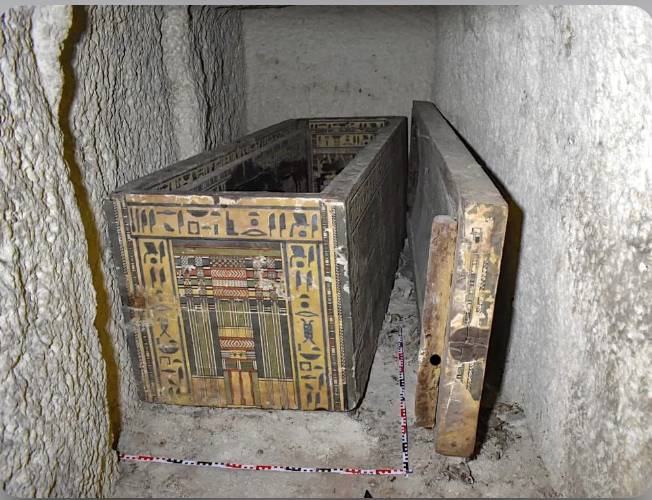 Archaeologists Discover Intricately Decorated Coffins Belonging to the Only Daughter of an Ancient Egyptian Governor
Archaeologists Discover Intricately Decorated Coffins Belonging to the Only Daughter of an Ancient Egyptian Governor
The 4,000-year-old burial chamber featured hieroglyphs referring to the woman, known as Idi, as the “lady of the houseâ€
Archaeologists have discovered a 4,000-year-old Egyptian tomb belonging to a prominent governor’s only daughter, Idi. She is buried inside two coffins—one stacked inside the other—covered in intricate decorations. The site dates to Egypt’s Middle Kingdom, a period that stretched from around 2030 to 1650 B.C.E.
“Finding two intact Middle Kingdom coffins is extraordinary,†Kathlyn Cooney, an Egyptologist and archaeologist at UCLA who wasn’t involved in the discovery, tells Live Science’s Owen Jarus. The coffins “not only seem well preserved but covered with intricate coffin texts that helped the deceased find their way in the realm of the underworld.†According to a statement from the Egyptian Ministry of Tourism and Antiquities, archaeologists found Idi’s chamber near the tomb belonging to her father, Djefaihapi, who served as governor of the prosperous Asyutregion, located along the Nile River. His burial was the largest non-royal tomb built during the Middle Kingdom, suggesting that Djefaihapi was one of the most prominent regional governors of the era.
Researchers found Idi’s burial chamber nearly 50 feet below ground. Though it appears to have been pilfered by ancient grave robbers, it still contains the woman’s two coffins, which are engraved and painted both inside and out. The larger coffin measures about 8.5 feet long, while the smaller one is around 7.5 feet. Based on an analysis of Idi’s skeleton, researchers think she died before the age of 40 and had a congenital defect in one of her feet. They also found several small artifacts, including a canopic jar—the container for a mummy’s internal organs—and two painted wooden statuettes. One of the figures may represent Idi.
The painted coffins are covered in hieroglyphic texts, which refer to Idi as the “lady of the house,†as Wolfram Grajetzki, an Egyptologist at University College London who wasn’t involved in the research, tells Live Science.
Idi’s father governed Asyut during the reign of Senusret I, the second pharaoh of the 12th Dynasty of Egypt, who ruled from 1971 until 1926 B.C.E.
As Joann Fletcher, an archaeologist at the University of York who was not involved in the excavation, tells Newsweek’s Aristos Georgiou, the woman’s tomb adds to researchers’ knowledge of the Middle Kingdom era, “which is all too often overshadowed by the earlier Old Kingdom ‘Pyramid Age’ and the late New Kingdom, with its big-name pharaohs such as Tutankhamunand [Ramses II].â€
Fletcher adds that the new discovery illustrates the Middle Kingdom’s “artistic and cultural splendor, as indeed is reflected in the quality of the paintwork on the newly discovered outer coffin.â€


